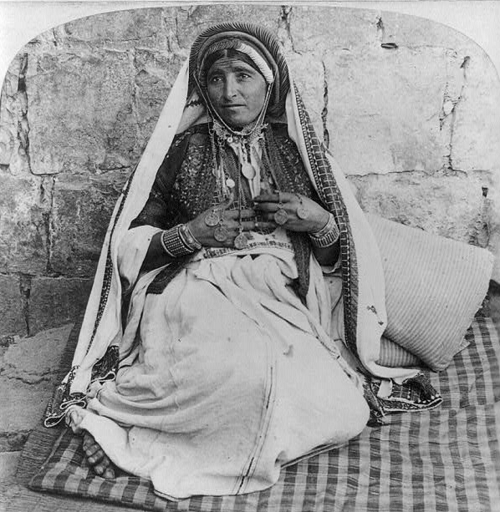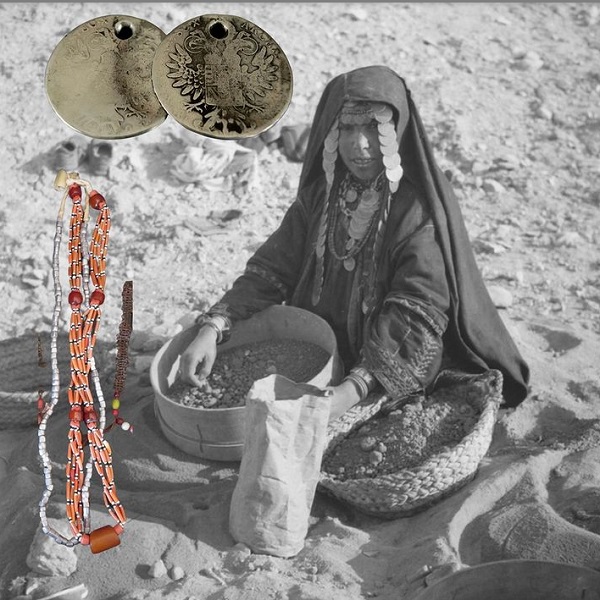Photographed on 10 February 1936. A woman on an archaeological excavation in Tell Deweir, Palestine, the site of ancient Lachish. She is wearing multiple bracelets and necklaces, along with a rich headdress laden with coins. Credit: Library of Congress/jewellery added by the author from her own collection.





